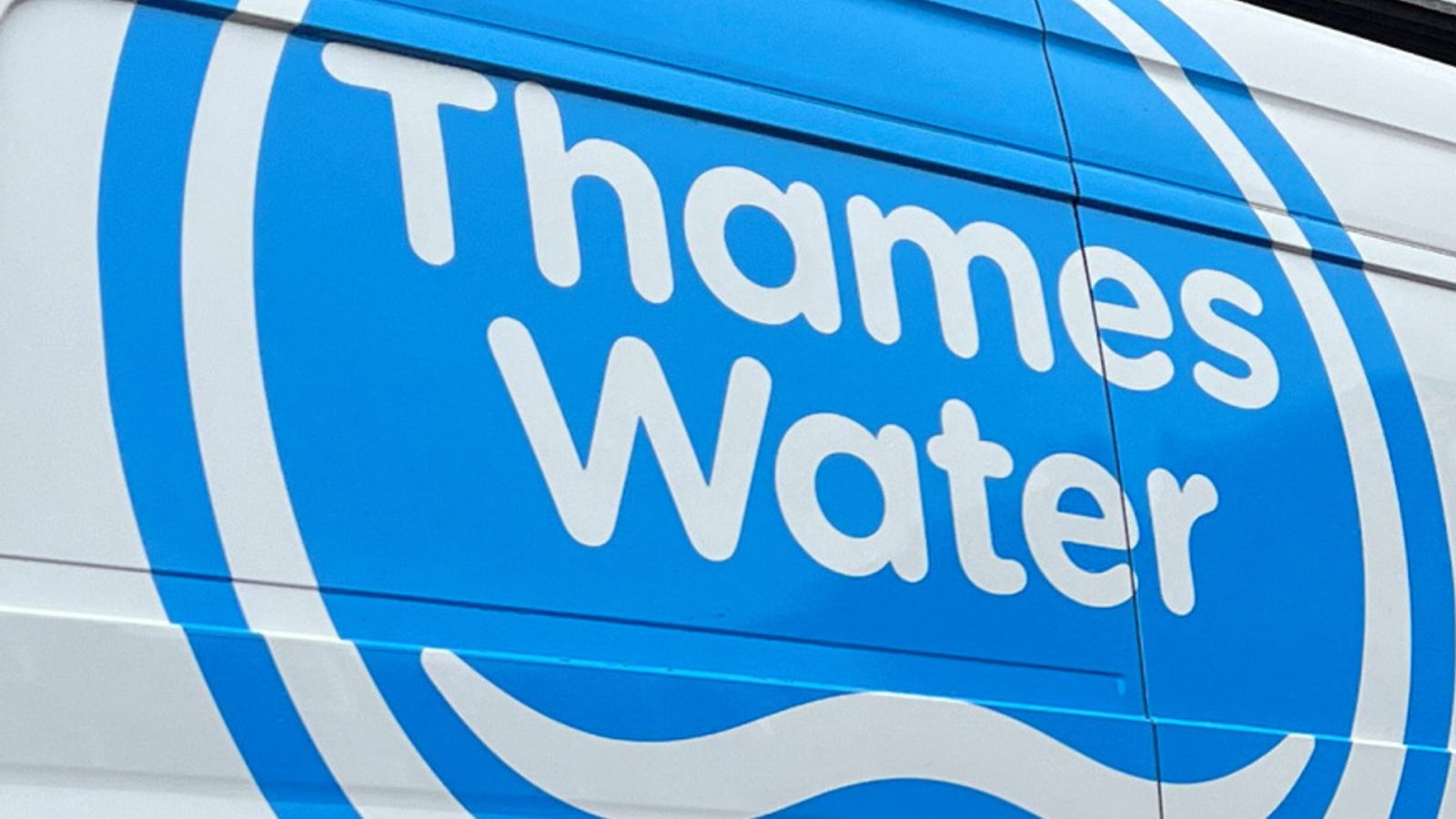
COLORADO SPRINGS, Colo. — Just outside Denver, in the Front Range Urban Corridor, the best college football team in Colorado is flying under the radar.
At the Air Force Academy, that is usually by design. The capability is a state secret.
In this context, though, success leads to visibility. Off to the best start by a service academy in more than two decades and carrying the nation’s fourth-longest winning streak (11), No. 22 Air Force (6-0) opens its defense of the Commander-in-Chief’s Trophy against Navy on Saturday (noon ET, CBS) as the top-ranked Group of 5 team in the country.
“We’ve always said if we go undefeated and win the conference, but we lose the Commander-in-Chief’s Trophy and we lose against one of the service academies, it’s a wasted year,” said senior linebacker Bo Richter. “We want to go out and dominate every week, but these games [against Army and Navy] just mean so much more.”
This year, the stakes are raised. The usual ramifications exist, but with each win, the Falcons inch closer toward the possibility of claiming the Group of 5’s New Year’s Six bowl berth — an accomplishment that would stand as one of the most significant by a service academy in college football’s modern era.
If it seems as if the Falcons have come out of nowhere to their current perch, it should not. They are the only Group of 5 team to win at least 10 games in the past three full seasons (2019, 2021, 2022) and one of just seven at the FBS level. Only Georgia, Ohio State, Alabama and Michigan have better winning percentages over those seasons.
If it seems improbable, that checks out. Air Force’s elevated success in recent years has come despite a confluence of events that seemingly should have made winning more difficult.
In an era when teams reload and fill holes through the transfer portal, Air Force cannot. While other schools can attract talent with even modest name, image and likeness benefits, Air Force cadets are not eligible for the same. This year, the NCAA adopted a rule change in the name of player safety that had an outsized impact on the triple-option offenses employed only by the service academies. Even the U.S. Congress passed a law in December that, after this season, will eliminate the opportunity for service academy graduates to defer their service requirements and pursue professional sports.
Given all of that, it’s hard to make sense of Air Force’s incredible run.
“I don’t know if you can, if you just leave it unfiltered,” said coach Troy Calhoun, the former Air Force player in his 17th year as his alma mater’s head coach. “It might not make sense.”
FOR CALHOUN, GAME WEEKS against Army and Navy always present a unique dynamic.
“What resonates so strongly is you have players on both teams that are going to go serve,” he said. “You don’t get along for those three hours, but in a much bigger picture, holy cow, you just never know where you could be. All over the world, we’re really joined at the hip, and you don’t know if that’s going to be in the Middle East or if that’s in Korea or wherever that may be. That’s the reality of this game more than anything else.”
Roughly seven years ago, Calhoun went on a coach’s tour to visit troops overseas. There were multiple stops in Europe and the Middle East. At Ramstein Air Base in Germany, he was greeted by current Air Force defensive assistant Anthony Wright. At Aviano Air Base in Italy, he ran into former players who were flying F-16 fighter jets. And in Bahrain he saw an old nemesis: former Navy quarterback Ricky Dobbs, who set the NCAA record for touchdown runs by a quarterback in 2009 (27).
“We wanted to beat him so bad,” Calhoun said. “But when you go interact with the human being, your thought is, ‘I’m so glad this guy is on our side.'”
All three service academies face similar challenges. It’s hard enough, anywhere in college football, to piece together enough good players to be competitive. Adding the additional obligation of military service, plus demanding academic and physical obligations on top of football has a way of thinning out the talent pool.
“That’s hard to find,” Calhoun said. “And then you want somebody who can make a play in the open field on Saturdays, too.”
The barriers to entry have always been steep. Few high school players enter the recruiting process with a future military career in mind. The dream of an NFL career is exponentially more prevalent, and for many of those kids, the thought of signing with Air Force, Army or Navy can represent an admission that it is unlikely to come true.
In 2019, a policy change removed the requirement for service academy graduates to spend two years on active duty before they were allowed to pursue a career in professional sports. Instead, they were able to seek a waiver to defer their service and pursue professional sports immediately after graduation.
The way Calhoun saw it, the waiver system made sense. It didn’t mean anyone was getting out of their service obligation, only that in some cases it would be delayed. In theory, it allowed the academies to recruit more ambitious future leaders, which, at their cores, is what the academies are all about.
However, last year a congressional bill reversed the 2019 decision, reestablishing the two-year service requirement, although it did retain the waiver option for players through the current senior class.
“We’re waiting to see [what happens], and, candidly, I think that would be a mistake for our country [to reinstitute the two-year waiting period],” Calhoun said. “If they were to go play in the NFL, it’s the rarest of the rare, but if you went for two or three years, you’re still going to serve a good number of years on active duty or in the reserves.
“Why would we deter that? Why would we want to take somebody that’s maybe looking at Duke, Stanford, Northwestern, Rice and the academies? We want that person. If they have those intangibles, the drive, the unity, the ability to build teamwork. We want them.”
Jacksonville Jaguars wide receivers coach Chad Hall was a standout running back and receiver at Air Force 2005-2007, and for the two years after graduation, he described himself as “the most boring 22-to-24-year-old you’ve ever met.”
That’s what it took to keep his NFL dream alive. Hall worked in aircraft maintenance after graduation.
“All I would do is wake up at 4 a.m., go to work, finish work, go train, go to sleep, wake up, do it all over again,” Hall said. “I didn’t take any leave during those two years just in case I had the opportunity to get into an [NFL] camp, I could take leave.”
When the opportunity arrived, he was ready. After Hall attended a pro day in Salt Lake City in March 2010, the Philadelphia Eagles signed him a few days later.
“For those next, really, two months, I flew to Philly on Sunday night, had practice Monday, Tuesday, Wednesday, Thursday. Flew back Thursday on the 1:30 flight, landed in Salt Lake City, went straight to work,” Hall said. “Worked a half-day Thursday, got up, worked Friday, Saturday, Sunday until my flight and then flew back. I had leave saved up where I was able to take some days off, and my [Air Force] leadership was working with me.”
He went on to spend parts of five seasons in the NFL with the Eagles, San Francisco 49ers, Kansas City Chiefs and Jaguars.
For several current Air Force seniors, the possibility of making an immediate attempt at an NFL career while the rules still permit it is intriguing.
“I think I’m going to do it,” said Richter, who leads the team with 7.5 tackles for loss and will graduate as part of the winningest class in school history. “I know Trey Taylor, our safety is definitely going to try to do it. I wouldn’t be surprised if John Eldridge, our running back does it. There’s a lot of guys that are going to try to make that opportunity for themselves.”
Before Austin Cutting (2019) and Jordan Jackson (2022), it had been 20 years since an Air Force player was selected in the NFL draft. No one has been selected earlier than the sixth round.
AFTER LEADING THE nation in rushing yards the past three seasons, Air Force again ranks No. 1. The Falcons’ average (334.2) is nearly 60 yards more than Liberty‘s (274.6), the nation’s No. 2 rushing offense.
This comes despite an NCAA rule that was adopted in the offseason that prevents blocking below the waist when outside the tackle box, something Calhoun felt targeted the service academies.
“I mean, it had to be. Let’s be real here,” Calhoun said. “I am a full believer in player safety, and I don’t think this was a player safety item. I think part of it was there’s a style of play that you didn’t want to encounter. … The service academy part of it, I think that was a factor.”
Army coach Jeff Monken was so spooked by the perceived impact the rule change would have on the triple-option flexbone offense that he instituted wholesale changes in the offseason to include more snaps from the shotgun and more passing. After averaging 8.2 pass attempts per game over the past five seasons, the Black Knights are throwing the ball 16.2 times per game this year.
For the Falcons, there has been no noticeable difference. Only once in the past 20 years have they averaged more yards per carry (2011), and they’ve never averaged fewer penalties per game (2.67) in that same span than this year.
Part of the offense’s success this season is a credit to the emergence of first-year starting quarterback Zac Larrier, the former Mountain West Conference 200-meter track champion, who is second on the team with 473 yards rushing. However, the Falcons will be without Larrier, a senior, against Navy — and for the foreseeable future — after he injured a knee in the 34-27 win against Wyoming on Saturday.
Larrier was replaced in the fourth quarter against the Cowboys by senior Jensen Jones, who proceeded to lose fumbles on back-to-back snaps before later icing the game with a 14-yard run.
“I wouldn’t say [losing Larrier] really impacts us a lot,” center Thor Paglialong said. “Zac, Jensen, Ben [Brittain], they’ve all been taking reps, so we’re confident with whoever we put back there.”
It helps that the Air Force defense ranks No. 9 nationally in scoring (14.7 PPG), and although that number is impacted by the fewer possessions in game dictated by Air Force’s offensive approach, the Falcons still rank No. 9 among Group of 5 schools in points allowed per drive (1.6).
Only Oregon and LSU average more points per drive in the FBS than the Falcons (3.84), who are one of just four teams to score touchdowns on at least 50% of their offensive drives this season.
Without the option to add players through the transfer portal, Air Force — the same goes for Army and Navy — has become even more of an outlier. Perhaps that’s a strength. It would partially help explain how Air Force is winning in the face of disadvantages.
“Coach Calhoun said this a couple weeks ago, but we don’t get ready-made guys,” Richter said. “We develop talent here. That’s so true. You see coaches ID a guy they want and say, ‘That’s the guy who is going to be the future of this position.’ Then you see them pour into these guys and see them blossom.”
At 6-0, there’s a temptation for Air Force to look ahead. Going to the Peach Bowl to play, say, Alabama carries a lot more intrigue than the Mountain West’s best bowl bid to play a midtier Pac-12 team in Los Angeles at the end of the year.
Recently, Richter overheard a teammate talking about how they could go undefeated. He shut it down quickly.
“It’s cool that we’re 6-0, but no one is going to remember that Air Force was 6-0 halfway through the season if you lose three games and go 10-3,” Richter said. “Nobody would care.”
At least that’s the case in these Rocky Mountains parts.












